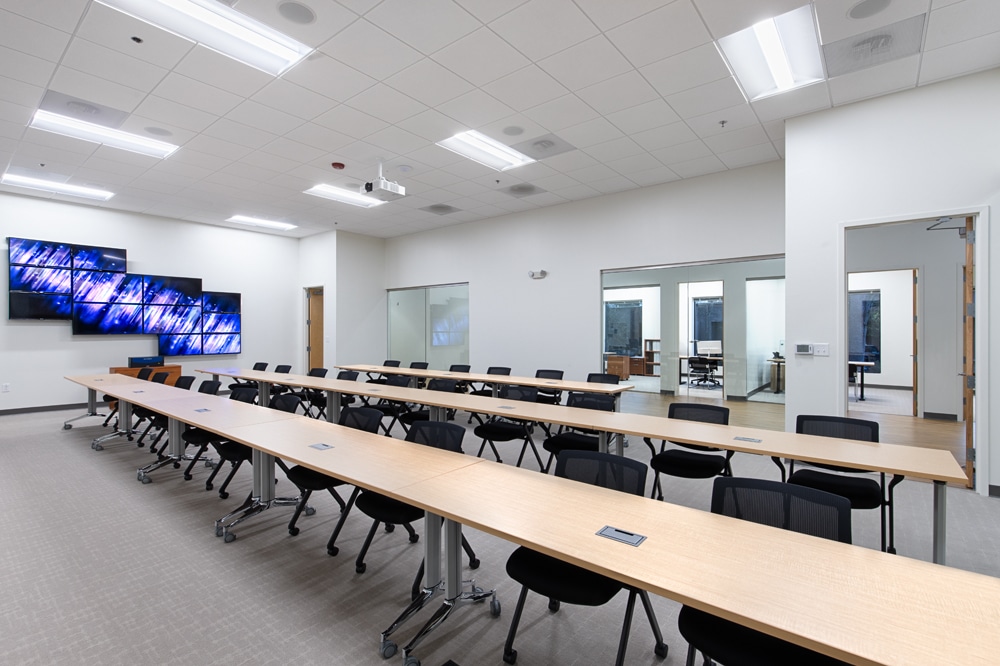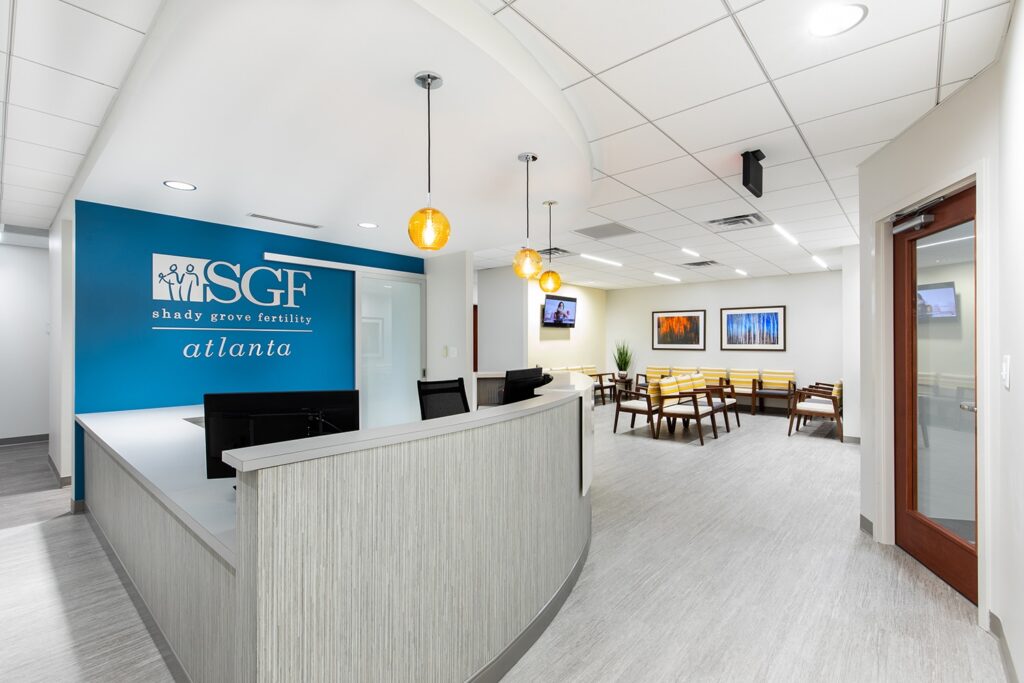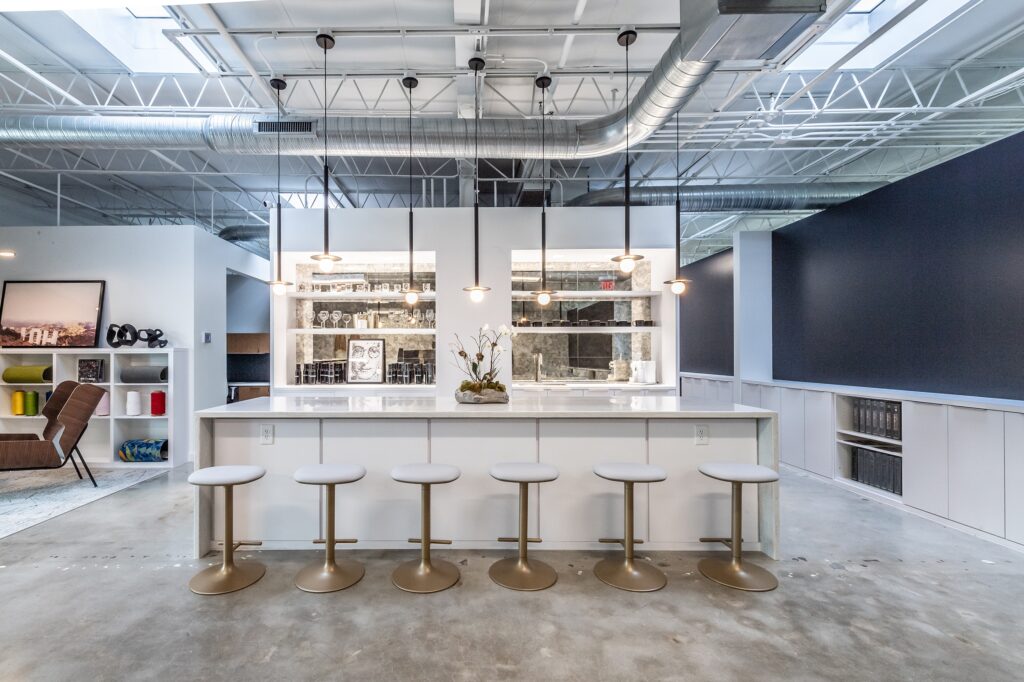Every industry has its own challenges, priorities, and workflows—and interior design plays a pivotal role in helping businesses meet their unique needs. A well-designed workplace can elevate productivity, enhance user experience, and communicate a brand’s identity. In today’s blog post, we’ll explore how to design beautiful spaces that enhance tech, healthcare, and creative businesses, tailored to their distinct needs.

Tech Sector: Spaces Optimized for Agility and Connectivity
For tech companies, innovation is probably the core of their culture—and their workspaces need to keep up. Open layouts remain popular, but without smart zoning, they can lead to a constantly distracted workforce. Carefully designed collaboration zones with modular furniture and writable walls encourage teamwork, while private pods or soundproofed rooms offer respite for focused work.
In addition, technology shouldn’t just be in the name—it should be baked into the design, too. Built-in charging stations, discreet cable management systems, and Wi-Fi-friendly layouts are essential to seamless connectivity.
From a visual standpoint, tech offices often lean toward a clean, industrial aesthetic—think exposed ceilings, polished concrete floors, and sleek metal finishes. To prevent these spaces from feeling cold or impersonal, incorporate playful splashes of color, brand-driven design elements, or biophilic touches like living walls or natural textures. These can soften the environment while still aligning with the modern, tech-focused atmosphere.

Healthcare: Balancing Comfort, Cleanliness, and Efficiency
In healthcare, the right design can mean the difference between a stressful experience and a more comfortable, calm experience – for patients and providers, alike. Waiting rooms, for instance, are shedding their clinical vibe in favor of spaces that feel welcoming and serene. High-end finishes like wood-look flooring, cozy upholstery, and subtle artwork help create a residential feel, while layered lighting help create a warm, inviting ambiance.
In addition, every design detail should be designed to maximize efficiency. For example, exam rooms need to be streamlined to provide quick access to tools and supplies without compromising on cleanliness. Durable, antimicrobial surfaces and seamless countertops can help promote hygiene while simultaneously remaining visually unobtrusive. Hallways and workstations should also be designed with traffic flow in mind.
Lastly, healthcare staff spend long, hard hours on their feet. Comfortable break areas are critical to maintaining morale and making sure staff feel supported throughout their demanding shifts. To help with this, we love designing break rooms in healthcare spaces that leverage natural light, ergonomic seating, and biophilic design elements—like indoor greenery or soothing textures—all of which have been shown to improve morale and boost productivity.

Creative Sectors: Bold, Flexible Spaces That Spark Ideas
In industries where creativity is the heart of the business—like advertising, publishing, or marketing—the workspace should serve as a source of inspiration. Color plays a huge role in fostering creativity, and incorporating bold, inspiring color palettes can significantly transform a space. Cleverly integrating your brand’s colors into the design is one of the most effective ways to reinforce brand recognition and create a cohesive, fun environment.
Functionality is also very for creative industries. Flexible spaces with movable partitions and multi-purpose furniture can help teams reconfigure their environments as needed. An open area might work for brainstorming sessions, while smaller, quieter nooks are perfect for focused solo work. Writable walls, magnetic boards, and integrated technology make these spaces versatile and adaptable to a variety of needs.
The materials used in creative spaces should walk the line between edgy and inviting. Exposed beams, raw wood, and polished concrete create a foundation of authenticity, while plush textiles and acoustic panels soften the space visually and acoustically. Lighting design here is particularly important—layered systems that can shift the mood from casual collaboration to formal presentations make the space as dynamic as the people who use it.
Outstanding Design for Every Industry
Every successful project we’ve ever done begins with a deep understanding of how a client works. For tech offices, this might involve mapping how teams interact and use technology daily. In healthcare, observing patient flow and staff routines can reveal opportunities to streamline operations and reduce stress. Creative companies benefit from spaces designed around their unique processes, from brainstorming sessions to collaborative production.
For over a decade, we’ve been helping businesses from every industry create beautiful spaces that help them do their best work. If you’re looking to perfect your Atlanta business’ design, reach out to us today!